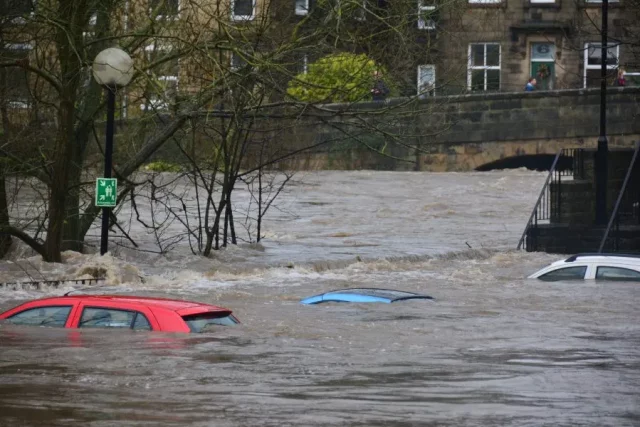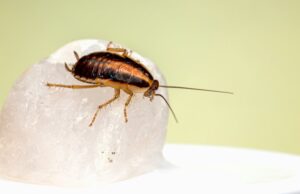Everyone needs to know how to protect themselves during natural disasters. By following some simple tips, individuals can help to keep themselves safe and secure until the danger has passed. Make sure to have a plan in place before disaster strikes, and be sure to keep yourself and your loved ones safe during and after the storm. Let’s explore your options.
Understand The Types of Natural Disasters
The best way to protect yourself during a natural disaster is to understand the different types of events that can occur. Knowing what to expect can help you better prepare for the potential dangers. Some of the most common natural disasters include flooding, hurricanes, tornadoes, earthquakes, and wildfires. Each type of event has unique dangers associated with it, so make sure you are aware of what could happen in your specific area. If you live in a windy area, you’ll need to know how to stay safe during a hurricane if there is a chance of it happening. Likewise, if you live in an area that is prone to flooding, you will need to take special precautions to keep yourself and your belongings safe.
Create A Disaster Plan
It’s important to have a plan in place before disaster strikes. This plan should include who you will contact in the event of an emergency, where you will go if you need to evacuate, and what items you will need to bring with you. If you have pets, make sure you include them in your plan as well. Planning can help to reduce the amount of stress and panic that occurs during a natural disaster. If your primary plan fails, it’s important to have a backup plan in place. This could include having a secondary evacuation route or staying with friends or family who live outside of the affected area. By having a backup plan, you can increase your chances of staying safe during a natural disaster.
Stay Informed
It’s important to stay informed about the latest developments during a natural disaster. This way, you’ll know what to expect and how to protect yourself. Local news stations are a great source of information for up-to-date updates on weather conditions and evacuations. Make sure to follow any instructions from local authorities, and avoid going outside if it’s not safe to do so. Additionally, you can stay informed by following social media accounts for your local area or the specific disaster that is happening. This way, you’ll be able to receive information from a variety of sources in real-time.
Prepare Your Home
If you live in an area that is prone to natural disasters, there are some things you can do to prepare your home. This includes installing hurricane shutters, reinforcing doors and windows, and stocking up on supplies. By taking some simple steps, you can help to keep your home safe during a storm. Before a natural disaster occurs, it’s important to have an emergency kit ready. This kit should include food, water, and other essential items that you will need in the event of an evacuation. If possible, try to have at least three days’ worth of supplies on hand. Additionally, your emergency kit should include a first-aid kit, flashlights, batteries, and an NOAA weather radio. By having these items readily available, you can increase your chances of staying safe during a natural disaster.
Install A Hurricane Shelter
If you live in an area that is prone to hurricanes, it is important to have a hurricane shelter. A hurricane shelter can protect you and your family from the dangerous winds and flying debris that a hurricane can bring. Installing a hurricane shelter is not as difficult as you may think. With a little planning and some basic tools, you can easily install a hurricane shelter in your home. The first step in installing a hurricane shelter is to choose the location of the shelter. The best place for a hurricane shelter is in an interior room on the lowest level of your home. A basement or garage would be ideal locations for a hurricane shelter. If you do not have a basement or garage, any interior room on the lowest level of your home will work. Once you have chosen the location of the hurricane shelter, you need to decide what type of shelter to install.
There are two types of hurricane shelters: a safe room and an underground shelter. A safe room is a room in your home that has been reinforced to withstand a hurricane. An underground shelter is a room or small building that is installed below ground level. Underground shelters provide the best protection from a hurricane, but they can be expensive to install.
Know Your Insurance Policy
It’s important to know what your insurance policy covers in the event of a natural disaster. This way, you’ll be able to make sure you are adequately protected. Most standard home insurance policies do not cover damage from floods or earthquakes. If you live in an area that is prone to these types of events, you may need to purchase additional coverage. Make sure to ask your insurance agent about what is covered under your policy so that you can be prepared in the event of a natural disaster.
Get Insurance Quotes
If you live in an area that is prone to natural disasters, it’s important to get insurance quotes. This way, you’ll be able to compare rates and find the best coverage for your needs. Make sure to shop around and get multiple quotes before making a decision. By doing this, you can ensure that you are getting the best possible coverage at the most affordable price.
Protect Yourself Physically
There are some physical steps you can take to protect yourself during a natural disaster. If there is a chance of flooding, try to avoid walking or driving through the water. This can increase your risk of being swept away by the current. If you live in an area that is prone to hurricanes, make sure to bring any outdoor furniture inside and secure any loose items. Additionally, it’s important to wear proper clothing and footwear to protect yourself from the elements. Wearing long pants, closed-toe shoes, and a long-sleeved shirt can help to keep you safe from debris or harmful chemicals.
By following these tips, you can increase your chances of staying safe during a natural disaster. Remember, it’s always better to be prepared than to be caught off guard. If you take the time to plan, you’ll be more likely to stay safe in the event of an emergency.














